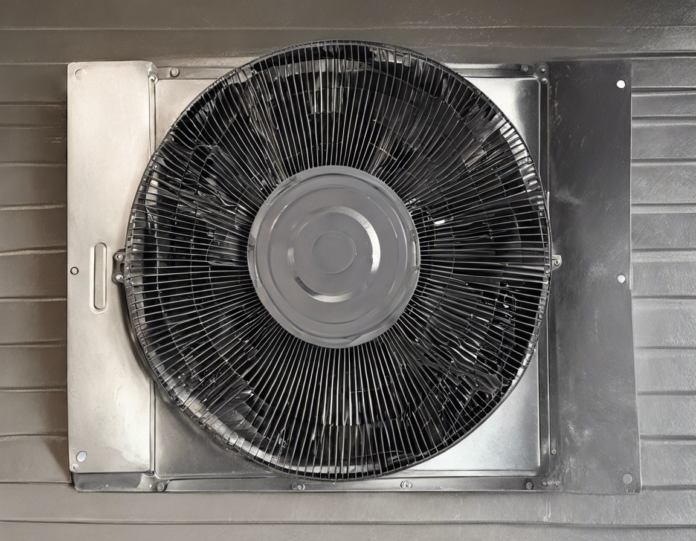A home exhaust fan may not be the most glamorous feature of a house, but it serves a crucial purpose in maintaining indoor air quality and controlling moisture levels. Whether in the kitchen, bathroom, or other confined spaces, an exhaust fan plays a vital role in ensuring a healthy and comfortable living environment. In this comprehensive guide, we will explore the various benefits of installing an exhaust fan in your home, the different types available, installation tips, and other essential information to help you make an informed decision.
Why Install an Exhaust Fan in Your Home?
1. Removing Excess Moisture
Exhaust fans are particularly effective in areas prone to moisture build-up, such as bathrooms and kitchens. By removing excess moisture from the air, they help prevent mold and mildew growth, which can cause health issues and damage to your home’s structure.
2. Improving Indoor Air Quality
Indoor air pollution can be a significant concern, especially in tightly sealed homes. Cooking, cleaning, and other daily activities can release pollutants into the air, leading to respiratory problems and allergies. An exhaust fan helps ventilate stale air and remove pollutants, improving the overall indoor air quality.
3. Enhancing Comfort
In bathrooms, exhaust fans are essential for removing steam and odors, creating a more comfortable environment for users. In the kitchen, they help remove cooking odors and heat, making for a more pleasant cooking experience.
4. Preventing Structural Damage
Excess moisture in the air can lead to condensation on windows, walls, and ceilings, which can eventually cause structural damage. By controlling humidity levels, an exhaust fan can help prevent these issues and extend the lifespan of your home.
Types of Exhaust Fans
When considering installing an exhaust fan in your home, you have several options to choose from, including:
1. Bathroom Exhaust Fans
Specifically designed for bathrooms, these fans are essential for removing steam from showers and baths, preventing mold growth, and maintaining a comfortable environment.
2. Kitchen Range Hoods
These fans are installed above cooking surfaces to remove cooking odors, heat, and grease from the air. They also help prevent smoke from spreading throughout the house.
3. Whole-House Ventilation Systems
For comprehensive indoor air quality improvement, whole-house ventilation systems exchange stale indoor air with fresh outdoor air. They are beneficial for homes with poor ventilation.
Installation Tips
1. Choose the Right Size
It’s essential to select an exhaust fan that is appropriately sized for the room it will be installed in. Follow manufacturer guidelines or consult a professional to ensure optimal performance.
2. Proper Placement
For maximum effectiveness, place the exhaust fan as close to the source of moisture or odors as possible. In bathrooms, they are typically installed near the shower or bath, while in kitchens, they should be located above the stove.
3. Consider Noise Levels
If noise is a concern, look for quiet exhaust fans with low sones ratings. These fans operate more silently and are ideal for bedrooms or other noise-sensitive areas.
4. Ventilation Ducts
Ensure that the exhaust fan is properly connected to ventilation ducts that lead outside the house. This prevents moisture and odors from being redirected into the attic or other areas of the home.
Maintenance Tips
Once you have installed an exhaust fan in your home, it’s essential to maintain it regularly to ensure optimal performance:
-
Clean the fan: Dust and debris can accumulate on the fan blades, reducing its effectiveness. Regularly clean the fan to keep it running smoothly.
-
Check for obstructions: Ensure that the ventilation ducts are clear of obstructions such as bird nests or debris, which can impede airflow.
-
Replace filters: If your exhaust fan has filters, replace them according to the manufacturer’s recommendations to maintain proper airflow.
FAQs (Frequently Asked Questions)
Q: Are exhaust fans energy-efficient?
A: Yes, modern exhaust fans are designed to be energy-efficient, consuming minimal electricity to operate.
Q: Can I install an exhaust fan myself, or do I need a professional?
A: While some homeowners may be able to install exhaust fans themselves, it’s recommended to hire a professional to ensure the fan is installed correctly and meets building codes.
Q: How often should I run my exhaust fan?
A: It’s advisable to run your exhaust fan during and after activities that generate moisture or odors, such as showering or cooking.
Q: What is the difference between an exhaust fan and a ventilation fan?
A: While the terms are often used interchangeably, an exhaust fan is designed to remove air from a specific area, while a ventilation fan is part of a whole-house ventilation system.
Q: Can an exhaust fan help reduce heating and cooling costs?
A: By efficiently ventilating indoor air and controlling moisture levels, an exhaust fan can help reduce heating and cooling costs by improving overall indoor air quality.
In conclusion, installing an exhaust fan in your home offers numerous benefits, from improving indoor air quality to preventing moisture-related issues. By choosing the right type of exhaust fan, following proper installation and maintenance practices, you can create a healthier and more comfortable living environment for you and your family. Whether you opt for a bathroom exhaust fan, kitchen range hood, or a whole-house ventilation system, investing in proper ventilation is a wise decision for any homeowner.





